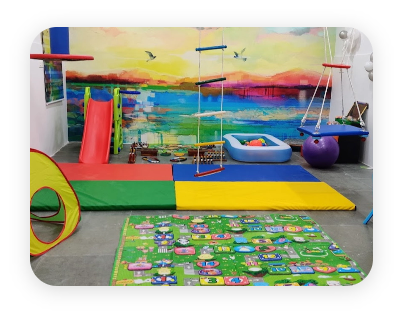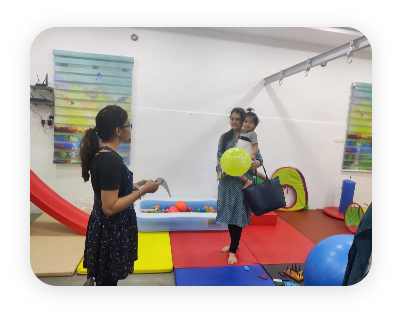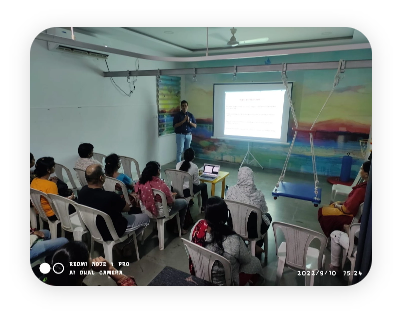

Who is Sensory Integration Therapy for

Sensory Seekers (SPD):
Children who require sensory input and become anxious without it. This therapy helps them reach balance and feel more grounded in their world.

Autism Spectrum Champions (ASD):
Autism spectrum children who become overstimulated with sensory input can use this therapy to hone their sensory radar, turning chaos to calm.

Focus Finders (ADHD):
For children with ADHD, sensory therapy can transform hyperactivity into concentrated energy, helping them better manage their day.

Emotional Regulation Issues:
Overreaction or difficulty managing emotions.
What Do We Do in Sensory Integration Therapy?

Jumping into Calm:
Sometimes children just need to get moving! We use equipment like a trampoline or crash mat to allow them to let off steam and feel more calm.

Tactile Play:
Some children are over-sensitive to touch, and that is just fine. We use fun materials like sand, slime, or water to allow them to discover different textures in a safe, fun environment.

Weighted Wonders:
Weighted blankets or vests can be like having a big hug. They assist in calming down and allowing children to feel relaxed and concentrated.

Light & Sound Adventures:
Shining colors, cozy lights, soothing sounds all serve to accustom children to the surroundings. It's all about making them more at ease in crowded or noisy areas.

How Sensory Integration Therapy Benefits
Sensory therapy is not all about play it assists children in making sense of the world around them and becoming more comfortable in their own bodies.
Improved Focus & Attention
Children learn to block out distractions and stick with a task longer, whether in school or during play.
Improved Motor Skills
Activities enhance balance, coordination, and those little movements required for writing, getting dressed, or handling utensils.
Less Overwhelm
When children can better process sensory input, they feel less upset and more capable of coping with big feelings.
Increased Confidence
As they master handling what’s around them in terms of sight, sound, and feeling, children become more independent and proud of themselves, as well.
How Sensory Integration Therapy Benefits
Sensory therapy is not all about play it assists children in making sense of the world around them and becoming more comfortable in their own bodies.
Improved Focus & Attention
Children learn to block out distractions and stick with a task longer, whether in school or during play.
Improved Motor Skills
Activities enhance balance, coordination, and those little movements required for writing, getting dressed, or handling utensils.
Less Overwhelm
When children can better process sensory input, they feel less upset and more capable of coping with big feelings.
Increased Confidence
As they master handling what’s around them in terms of sight, sound, and feeling, children become more independent and proud of themselves, as well.

Sensory integration therapy procedure
Sensory integration therapy employs various activities to enhance how sensory information is processed.

Expert Care
Work with highly skilled and experienced therapists.

Daily Sessions
Benefit from 40-minute sessions each day for optimal progress.

Comprehensive Communication
Enjoy a thorough communication process to keep you informed and engaged.
Frequently asked questions
Some children start making small changes within weeks. But each child is different, and steady progress takes time and regular sessions.
Each session is enjoyable and experiential. We use playful, sensory-based activities to help your child feel a sense of mastery over body, mood, and focus.
Most parents notice changes within a couple of months. Progress depends on the needs of your child and how often they come in for therapy.
Yes, sensory therapy mixes well with speech, occupational, or behavioral therapy. We generally work together to give your child the best overall care possible.
With time, you may observe better balance, reduced aggression, improved attention, and a greater degree of independence in activities of daily living.
Certificate &
Verification





We are also featured in















